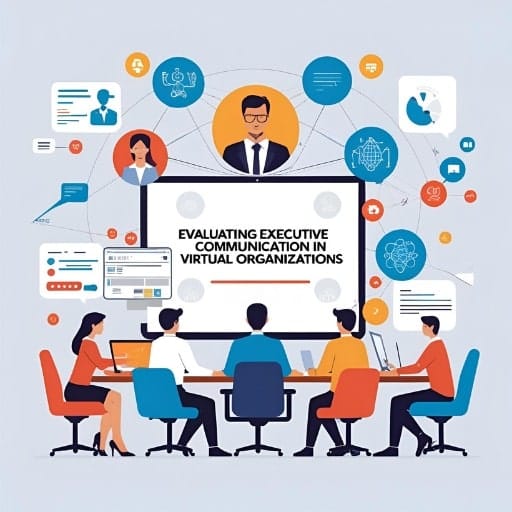Introduction: The Rise—and Risk—of the Remote CEO
As the modern workforce embraces remote-first models, the stakes for selecting the right CEO have never been higher. Hiring a CEO for a distributed team environment isn’t just about strategic vision or operational experience—it’s about their ability to build, lead, and inspire a high-performance culture without walls.
The traditional cues of in-person leadership—physical presence, hallway conversations, and spontaneous team interactions—no longer apply. Instead, you’re looking for someone who thrives in ambiguity, communicates with intention, and fosters connection through a screen.
So how do you assess CEO leadership for remote work culture? At JRG Partners, we help clients evaluate more than resumes—we measure readiness for cultural leadership in remote-first companies.
Pro Tip: Evaluating a CEO’s remote leadership capability requires a modern assessment framework, which is central to our process for a CEO search.
1. Why Cultural Leadership in Remote-First Companies Is Different
In a remote-first world, culture doesn’t just happen—it must be engineered.
A CEO’s ability to build trust, model accountability, and maintain team cohesion remotely is a non-negotiable skill. They must overcommunicate with clarity, demonstrate empathy without proximity, and ensure everyone—from engineers to executives—feels seen and aligned.
The right CEO is not just digitally literate. They’re culturally intentional.
They:
- Lead with transparency in asynchronous formats.
- Reinforce values through digital rituals and forums.
- Prioritize outcomes over face time.
- Are fluent in both Slack messages and strategic offsites.
This is why traditional leadership indicators often fall short—because cultural success in a fully remote environment requires a different muscle.
2. Assessing CEO Leadership for Remote Work Culture
To evaluate this capability, companies need to go deeper than surface-level credentials.
At JRG Partners, we use a multi-layered approach:
a. Remote Scenario-Based Interviews
We craft challenges CEOs are likely to face in a distributed model—team misalignment, burnout, silence in meetings—and ask how they’ve solved similar issues.
b. 360° Back-Channel Referencing
We specifically ask former colleagues how the candidate communicated remotely, managed time zones, handled virtual conflict, and preserved cultural cohesion.
c. Executive Communication Simulations
We observe the candidate’s ability to lead all-hands meetings, issue difficult updates virtually, and maintain engagement across Zoom fatigue.
These tools help us filter candidates who merely tolerate remote models from those who thrive within them.
3. Evaluating Executive Communication in Virtual Organizations

In a remote setting, communication isn’t a soft skill—it’s a survival skill.
The CEO must be able to:
- Inspire through asynchronous messaging (emails, Loom videos, recorded town halls).
- Handle delicate issues (layoffs, crises) without face-to-face reassurance.
- Balance visibility with focus—ensuring they don’t become a bottleneck or a ghost.
We evaluate:
- Tone consistency across platforms.
- Message clarity without context clues.
- Accessibility and frequency of communication.
Remote leadership lives or dies by communication. If a candidate lacks virtual presence or consistency, it will erode team trust over time.
This specialized assessment is a key part of what a dedicated Chief Executive Officer search firm provides. They ensure that the search process identifies leaders capable of successfully navigating and shaping remote-first organizational cultures.
4. Building Trust in a Fully Remote C-Suite
Trust is the oxygen of remote cultures. Without watercooler conversations and body language, trust must be built deliberately.
We assess how a CEO:
- Builds psychological safety in virtual rooms.
- Balances autonomy and accountability.
- Empowers their C-suite to model distributed leadership.
Back-channel references tell us if they micromanage from a distance or cultivate high-trust ecosystems. We also look for signs of radical candor, inclusion, and coaching across time zones.
5. Hiring CEO for Distributed Team Environment: Red Flags to Watch
When hiring a CEO for a distributed team environment, certain red flags indicate poor remote leadership fit:
- Preference for in-office decision-making.
- Discomfort with asynchronous tools like Notion or Loom.
- Overreliance on face-to-face presence to drive influence.
- History of low engagement scores from distributed teams.
If a candidate expresses nostalgia for traditional office structures or dismisses remote challenges as “solvable by return-to-office,” they’re likely not the right fit.
Failing to thoroughly assess this capability can lead to significant problems, as seen when we hired a C-Level executive remotely and they’re a poor cultural fit in person.
Conclusion: The Remote CEO Is Not Optional—It’s Essential
A great CEO in a traditional setup may falter when dropped into a remote-first company. The leadership toolkit must expand—because success in a fully distributed environment demands cultural clarity, trust-building, and digital-first decision-making.
At JRG Partners, we specialize in identifying CEOs who can lead not just from the front—but from afar.
If you’re scaling a distributed organization and need a CEO who can unite, inspire, and grow a remote culture, we can help you find a leader who doesn’t just adapt—they accelerate. Ready to find the ideal CEO to lead and grow your remote-first organization? Connect with JRG Partners today to discuss your executive search needs.


